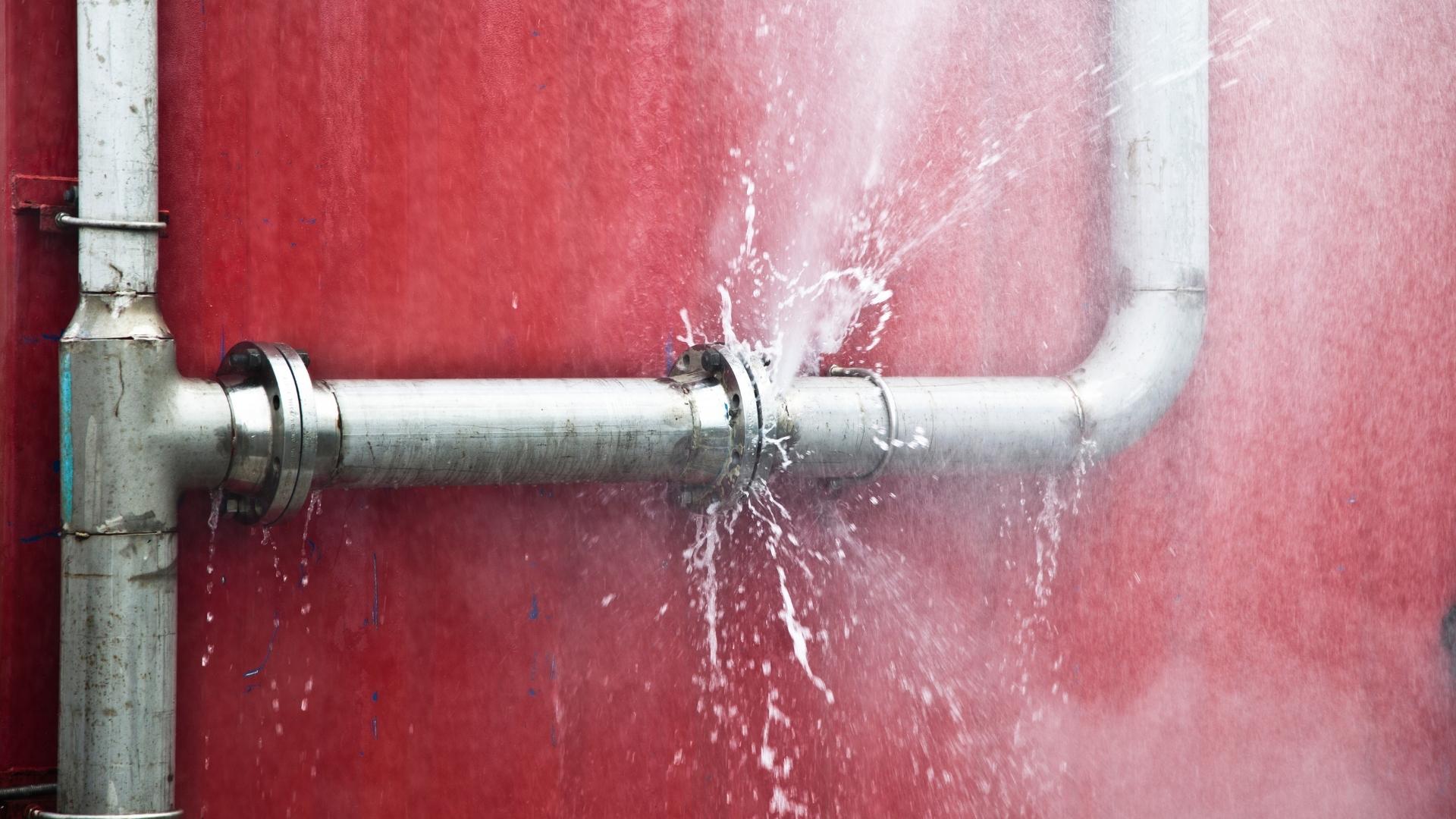Finding and Fixing Common Causes of Flange Leaks

Flange leaks occur when the material contained in your system escapes around the gasket or the flange face. These leaks can lead to significant damage, workplace hazards, and downtime that makes your operation less efficient.
As experts in safety sealing solutions for a wide variety of industry applications, Lamons is here to help diagnose and solve your sealing performance issues. The best way to handle a flange leak is to prevent it from occurring by choosing the right gasket for your application and following best practices for flange assembly. If you are currently experiencing flange leaks, the first step is to identify the root issue — some of the most common causes are incorrect component materials, incorrect dimensions, or incorrect installation procedures. Keep reading to learn how to pinpoint what is causing your flange leak and how to fix it.
1. Gasket is Badly Corroded
Significant corrosion on the gasket is a common cause of flange leaks. This issue has a straightforward fix: replace the damaged gasket with a new one. To avoid future leaks, make sure to select a material that has effective chemical resistance against your application’s media type. All Lamons products include material options for chemical compatibility.
2. Gasket is Extruded Excessively
If you notice that your gasket is excessively extruded, your flange leak may be the result of cold flow, insufficient load bearing capability of the gasket, or too much clamping load from the fasteners. To fix this issue, select a gasket with a premium filler material that inhibits cold flow, such as Matrix biaxially orientated PTFE sheet gaskets or Matrix L120 expanded PTFE sheet gaskets. If the issue is too much clamp load, reach out to the engineers at Lamons for assistance in double-checking the bolt up protocol for your connection.
3. Gasket is Grossly Crushed
A grossly crushed gasket is a sure sign that either the flange was overloaded with clamping force, or that you need to replace it with a material that has better load bearing. If the issue is too much clamp, you can prevent future crushed gaskets and flange leaks by contacting the engineers at Lamons to verify the bolt up protocol for your connection. If the issue is caused by your gasket material, choose a material with a dense core that provides superior load bearing, such as the Lamons Kammpro, Lamons CorruKamm, or Lamons SpiraSeal WRI.
4. Gasket is Damaged Due to Overhang
If your gasket is mechanically damaged due to overhang of the raised face or flange bore, your leak was likely caused by a gasket that is the wrong size or is not correctly centered. To remedy this, make sure your field measurements are accurate and choose a gasket to match. If you need help, Lamons provides on-site field measurement services and reverse engineering services to reproduce undocumented gaskets in the field.
5. No Apparent Gasket Compression Achieved
If your flange is leaking due to a lack of gasket compression, switch to a gasket that can deliver a seal at a lower bolt load, such as a Matrix CPG PTFE gasket, corrugated metal gasket, Kammpro, or CorruKamm. Lamons also supplies Kammpro-Spacers to remedy excessive flange gaps.
6. Gasket Thinner on OD than ID
If your gasket is substantially thinner on the outside diameter (OD) compared to the inside diameter (ID), this indicates excessive flange rotation or bending caused by bolt overload. To remedy this, you can alter gasket dimensions to move the gasket reaction closer to bolts, which minimizes bending movement. You can also provide additional stiffness to the flange by adding back-up rings. Finally, you can lower required seating stress by selecting a gasket with a lower load requirement for sealing, such as a non-metallic gasket made of a softer material.
7. Gasket is Unevenly Compressed
If your gasket is unevenly compressed around its circumference, or if gasket thickness varies periodically around its circumference, leaks can occur. This is most often caused by incorrect flange assembly. The best remedy is to follow ASME PCC-1 guidelines to ensure that all fasteners are equally loaded and flanges are parallel, aligned, and properly spaced. Lamons offers a PCC-1-based flange assembly training led by experienced instructors who can help your team learn best practices for bolting up flanges and installing gaskets.
8. Wide Temperature Variations
Wide temperature variations in your application environment can cause flange leaks. To fix this, choose a gasket that offers better loading with wide temperature variations, such as the CorruKamm. You may also consider using conical spring or Belleville washers in place of sleeves to reduce torque losses over wide temperature ranges.
By choosing the right gasket material, measuring accurately, and following correct installation procedures, you can typically fix your current flange leaks and prevent them in the future. If you’re having trouble identifying the cause of a leak, Lamons has the expertise to help you pinpoint the issue and recommend a sealing solution to prevent damage, hazards and downtime.



